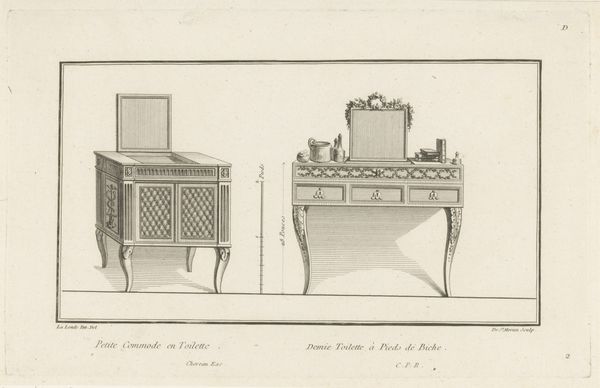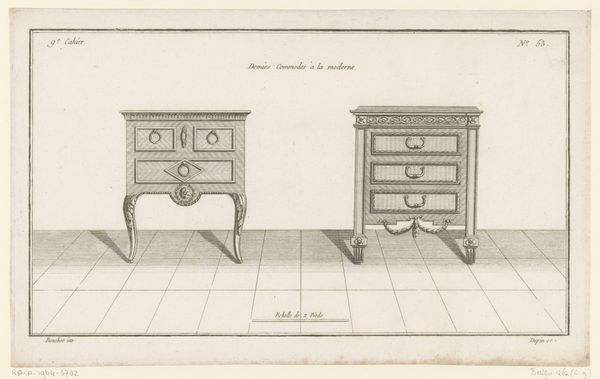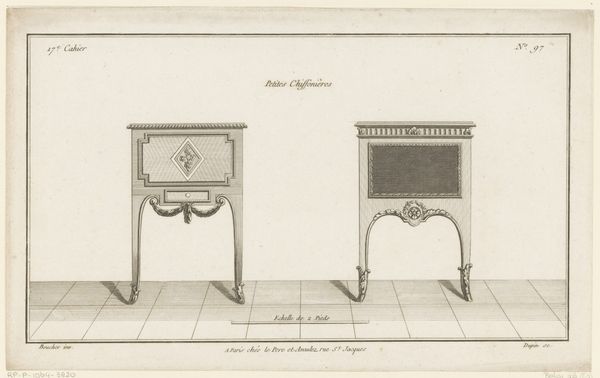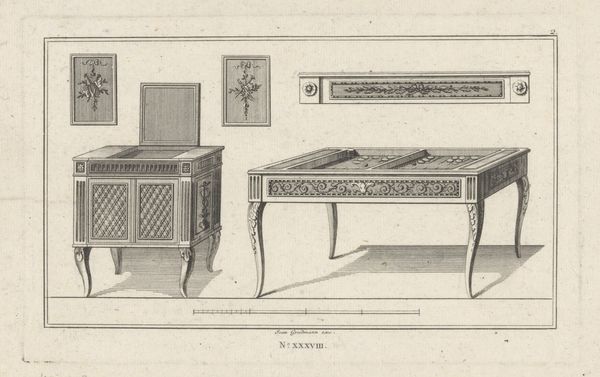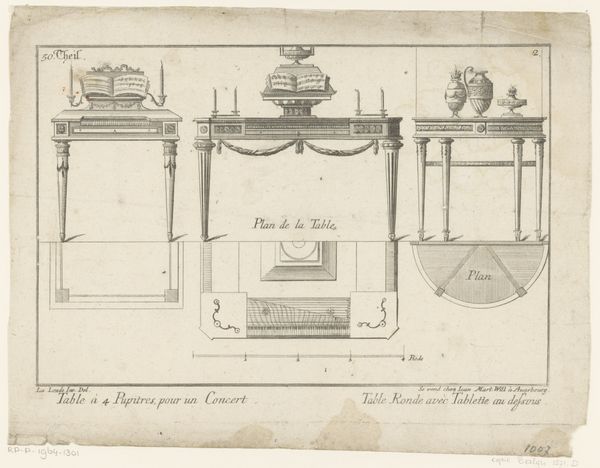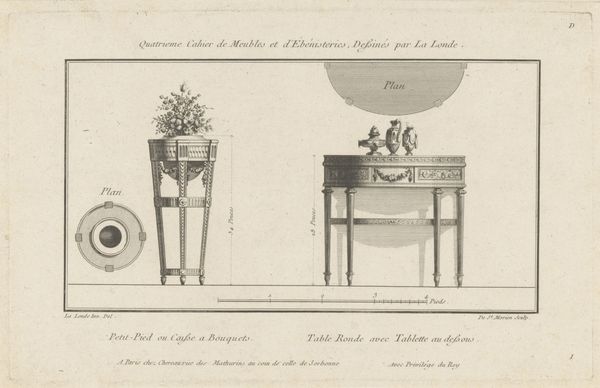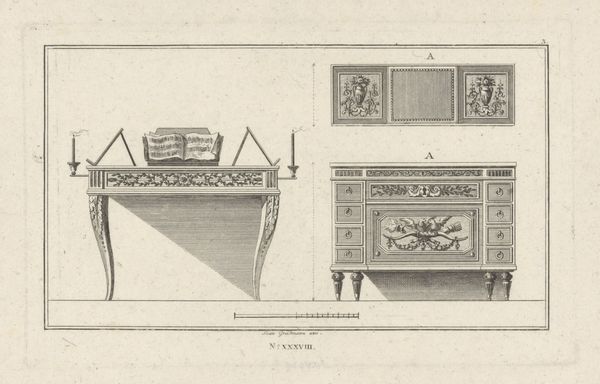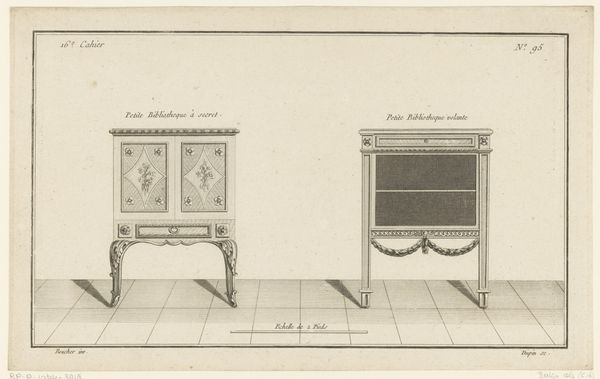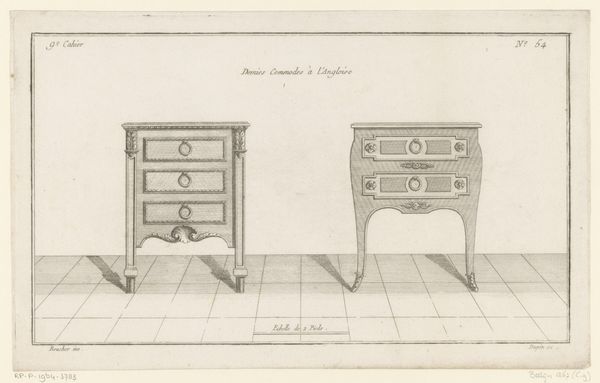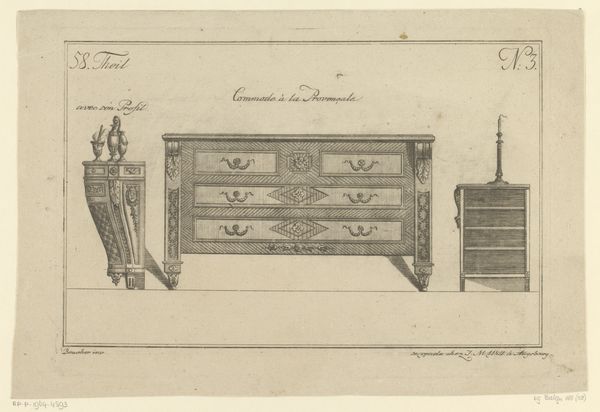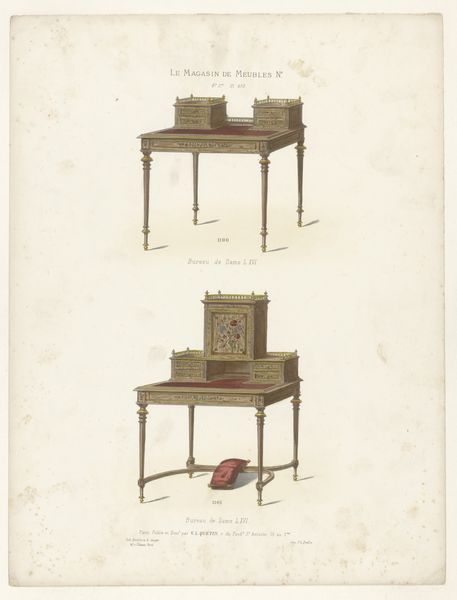
drawing, print, metal, paper, engraving
#
drawing
#
table
#
neoclacissism
# print
#
metal
#
old engraving style
#
paper
#
engraving
Dimensions: height 160 mm, width 260 mm
Copyright: Rijks Museum: Open Domain
Editor: Here we have Johann Carl Schleich’s “Twee tafels en een speltafel,” dating from between 1769 and 1820. It's a print, an engraving on paper showcasing different table designs. I’m struck by the clean lines and almost architectural precision. How do you read this piece, considering its historical context? Curator: Well, consider the timeframe: 1769 to 1820. We're in the thick of Neoclassicism. What was Neoclassicism reacting against? The extravagance and perceived decadence of the Rococo period. These designs reflect a desire for order, reason, and a return to the aesthetics of ancient Greece and Rome. Look at the symmetry, the restrained ornamentation. Does it remind you of anything? Editor: I see what you mean! Like columns in a Greek temple? Everything's balanced and… rational. But is it just about aesthetics, or were there broader social implications? Curator: Absolutely. The Neoclassical style wasn't just a visual preference; it was a visual manifesto tied to Enlightenment ideals. Think about the political upheavals of the era – the American and French Revolutions. The focus on order and rationality was linked to a desire for social and political reform. These table designs might seem like simple furniture, but they represent a yearning for a new, more equitable society, in opposition to the indulgent aristocracy. Do you see it reflected even in the choice of materials? Editor: I hadn't thought about the materials. The description mentions metal, so there’s that association of industry versus… carved wood? I like how the choice of furniture became political and ideological. Curator: Exactly. Even something as seemingly mundane as a table could be imbued with meaning and become a tool for communicating socio-political messages. Perhaps that is why they are trying to visualize furniture design on print and distribute those to general population to spread ideologies around. What do you make of that today? Editor: It’s really interesting to think of design as a reflection of wider cultural shifts. I’ll never look at a table the same way again. Curator: Precisely. It challenges us to consider the historical, social, and political forces that shape not only art but everyday objects.
Comments
No comments
Be the first to comment and join the conversation on the ultimate creative platform.
